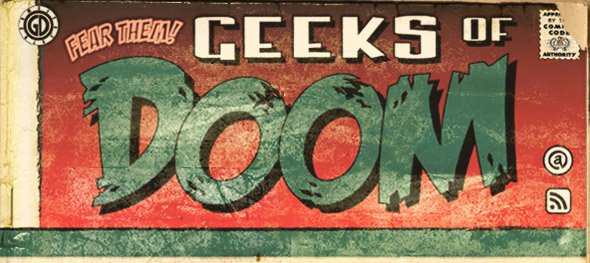
Doctor Who: The Time Lord Letters
Hardcover | Kindle
by Justin Richards
Harper Design | HarperCollins Publishers
Release date: September 29, 2015
Ahhh, what would it mean to know the mind of a Time Lord? It must be something to know what a Time Lord saw. There must be wit! There must be wisdom! There must be an ambivalence, a humor about the mundane moments. There must be perspective that comes from the understanding of time and history as a sometimes malleable thing. So, we are presented with a book called Doctor Who: The Time Lord Letters. What does it tell us?
In the end, it doesn’t tell us much. It tries to create a narrative of Doctor Who history that is approachable for younger television viewers. The actual history of the show is far more complex than that, due to reasons that have little to do with good storytelling. The full-color hardcover title does little to weave together all the historical threads of the Doctor’s lives. Instead, the book’s best appeal is to provide both older and younger viewers with an excellent photo collage of the entire history of Doctor Who. That, I think, is what will keep readers coming back to this book.
Printed Doctor Who material classically falls into one of three categories: fiction, non-fiction, and what is in between. The fiction began with comics and novelizations. It more recently branched out into original novels and Big Finish radio dramas. The non-fiction includes various episode guides, historical summaries, and production documentaries. The in-between frequently operates in both worlds at once. Doctor Who Magazine is the prime example of this. It offers interviews with actors and production staff, reviews content, and features serial Doctor Who comics, including (in the first half of the ’80s) early work by the likes of Alan Moore and Dave Gibbons.
Doctor Who: The Time Lord Letters attempts to strike a similar in-between tone. It presents 128 letters or short notes, all ostensibly either by or about the Doctor, all but seven of them referencing story material from one or more episodes or serials of current or Classic Doctor Who. The remaining seven try to fill in some blanks in the Doctor’s early history, represent correspondence with some well-known figures in European history since the Renaissance, or, in one case, show the goodbye to Brigadier Alastair Gordon Lethbridge-Stewart that the long-time fans of the series never quite got. Each note is accompanied by pictures, usually production stills or promotional art, of the material that each of the notes reference. The notes cover 51 years of the show’s run, from “An Unearthly Child” in 1963 all the way to “Listen” and “The Last Christmas” from the 2014 season.
The book is organized into six themes: Gallifrey and the Time Lords, Planet Earth, Coal Hill School, The Daleks and Other Monsters, U.N.I.T., and The TARDIS. The spread of material across these themes is revealing. The largest group of entries is reserved for the three most recent Doctors: David Tennant, Matt Smith, and Peter Capaldi. That’s both understandable and odd; it’s natural that an appeal to younger viewers would include Doctors that they are familiar with, but Peter Capaldi gets a pretty significant number (much of it in the Coal Hill School theme) given he’s only been the Doctor for just over one full season.
After that, it is a presentation of the deeper past. A large group of entries is given to the Doctors of the 1970s: Jon Pertwee and Tom Baker. Much of Pertwee’s material falls into the U.N.I.T. theme, perhaps highlighting some interest in tying in the modern incarnation of U.N.I.T. with its 1970’s forebear. The Doctors of the 1960s — William Hartnell and Patrick Troughton — are the third most frequently referenced. This, I think, reflects how much of Doctor Who has been lost. The show produced over 40 episodes a year in those years, making the output of these two actors each exceed that of any of the other Doctors since. Yet, much of that material is unfamiliar and unknowable to modern audiences because the video tapes were erased in the 1970s, and film copies were lost or thrown out. Finally, the Doctors of the 1980s and 1990s fare the worst with the three Doctors of the 80s getting less than two score entries and Paul McGann getting none.
Perhaps the most striking feature of the entries is how few of them actually reference props used on the show. Only two of the entries consist of notes or letters that the Doctor actually sent in episodes. We get the note the Tom Baker’s Doctor wrote to Sarah and the Brigadier in “Robot.” We also get a note written by Tom Baker to the Chancellery Guard (in a Time Lord script very different to that used now) regarding the plot to assassinate the Time Lord President in “The Deadly Assassin.” Given episodes spread across 51 years, the fact that these were only two written props worthy of recognition seems a little odd.
The fact that few other candidates spring to mind is even more unusual. The Doctor, it seems, is a creature that communicates either in either the most ancient or modern of ways. Either he passes messages via intermediaries, or speaks directly via some kind of wireless communication. He’s been known to write or carry diaries at several points in his history, but the contents of those books remain largely secret.
I think we must put this down to the needs of television drama. Communication via letter is a literary technique. It compactly presents information within an narrative text that is already engaging the reader. That makes little sense in acted drama, where information is presented to an audience either visually or by spoken dialogue. Notes or letters must be read out loud to be communicated, and it doesn’t make a lot of sense do that often on television.
As for the notes themselves, great literature they are not. Except for a rather irreverent unifying tone, they don’t do a lot to illuminate the inner life of the Doctor or make significant contribution to the continuity of the show. Part of their problem is likely that they try to impose a sense of continuity where none really exists; the origins of the Doctor are something that was stitched together over the show’s first two decades, often overwriting significant inconsistent details. Much of the early Doctor material presented here is a retcon that attempts to put those early years into a continuity established later. No one had ever even thought of a Time Lord in 1963, and the Doctor’s TARDIS was not stolen until as late as 1969. Writing about that now ignores those complexities, and really tries to cover over anything unique or interesting about Doctor Who‘s early history.
The pictures that accompany the notes are much more successful. That is where any enduring attraction for the book will be, I think. It’s mostly production stills, with some promotional art thrown in, but it’s comprehensive in ways that picture retrospectives often are not. The Pertwee era gets a lot of love in this regard. The choice of Hartnell and Troughton serials is somewhat novel (to my eyes) and well photographed, too.
I am more used to remembering photo retrospectives in book or magazine form from the 1980s, and the 1970s pretty much belonged to Tom Baker alone in those days. Yes, the Pertwee years introduced or developed important show concepts like U.N.I.T. or the Master, but they were not loved the way Baker’s seven seasons with the show were loved. In terms of pictures, this meant that Doctor Who retrospectives in glossy books like this one played out in similar ways: show some pictures from the 1960s, preferably in color, to tease readers with memories of the series only available then in novelizations; show a few Pertwee bits that developed concepts and characters referenced later; and then get to the Baker years where the show hit its modern stride. After that, the goal was usually to promote the hell out whatever was going on with the show currently. The revival of Doctor Who in 2005 and the recent 50th anniversary are kind to retrospectives in this regard. Modern shifts in continuity, as well as the greater availability of material from the 1960s, has created an acknowledgment (however glib) that different eras of the show are unique and sometimes weird compared to folklore regarding Who history that evolved.
In sum, this is a book that will be better remembered for its art than its writing. It places a heavy emphasis on more recent history than on the distant past, and comes close to ignoring Doctor Who between 1981 and 2005. Its text does little to add to the existing body of canonical work of Doctor Who. No, it is more a book for the eyes. It is the pictures from the near present and past that keep the pages turning from beginning to end. The organization of the material is a little odd, and reflects a show continuity that to some degree does not exist. I think this is a book that will mostly appeal to more diehard fans, or perhaps invite younger fans to investigate Doctor Who lore more seriously.








No Comments »
No comments yet.
RSS feed for comments on this post. TrackBack URL
Leave a comment